
Oh, no! Your native plants look dead. Here’s what to do
So you’ve torn out your lawn and created a native plant garden to conserve water and restore habitat for struggling birds and insects. But summer is approaching, many of your beautiful plants are starting to shrivel and your neighbors are giving you the stink-eye.
Welcome to summer in your new native garden, where maintenance is more about mindfulness and patience than gas-powered mowers and whackers.
The good news: You no longer have to carve out time every week to mow your lawn (or pay someone else to do it).
The bad news: You still have to weed.

Goldfields, which bloom from March to May, will go dormant during the dry, hot summer months.
(Myung J. Chun / Los Angeles Times)
Weeding is likely the biggest and most important task you’ll face, said Bruce Schwartz, a one-time puppeteer and artist who now works full time maintaining his Highland Park property, a wilderness of plants native to the nearby San Rafael hills and Verdugo Mountains.
That’s because invasive, non-native weeds are tough, quick and constantly competing for light, nutrients and water against slower-growing native plants, said Schwartz, who blogs under the name Eric Ameria at LA Native Plant Source.
“This is actually a really good time of year to do remedial weeding, because the wildflowers have died back and you can actually see the weeds,” Schwartz said. “You can easily see the pernicious weeds now because they’re green when everything else is brown.”
In general, a weed is any plant you don’t want, said Max Kanter, owner of Saturate, a native plant maintenance business based in Silver Lake. But for purists like Schwartz, weeds are non-native invasive plants imported during European colonization.
One of the worst culprits is chickweed (Stellaria media), a spreading Eurasian native probably imported years ago because it is edible and has medicinal uses, “but it’s the bane of wildflower growers,” Schwartz said. “It grows in rank mats faster than wildflowers, and if you don’t control it, it will smother everything in a New York second.”
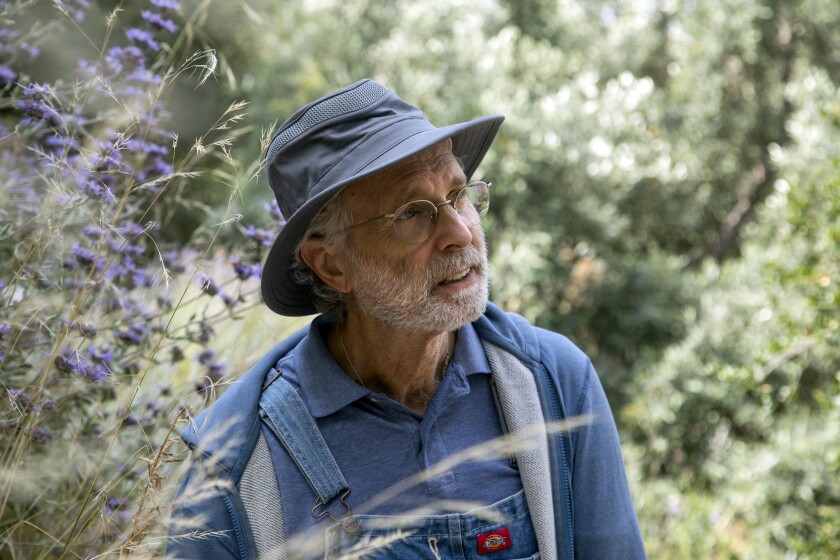
Bruce Schwartz sits in his native plant garden.
(Myung J. Chun / Los Angeles Times)
Other native plant enemies include sow thistle; dandelions, which spread clouds of seeds once their cheerful yellow flowers dry up; tall bulky horseweed; round-leaved cheeseweed; purslane; and spurge, which blanket the ground like thick green doilies.
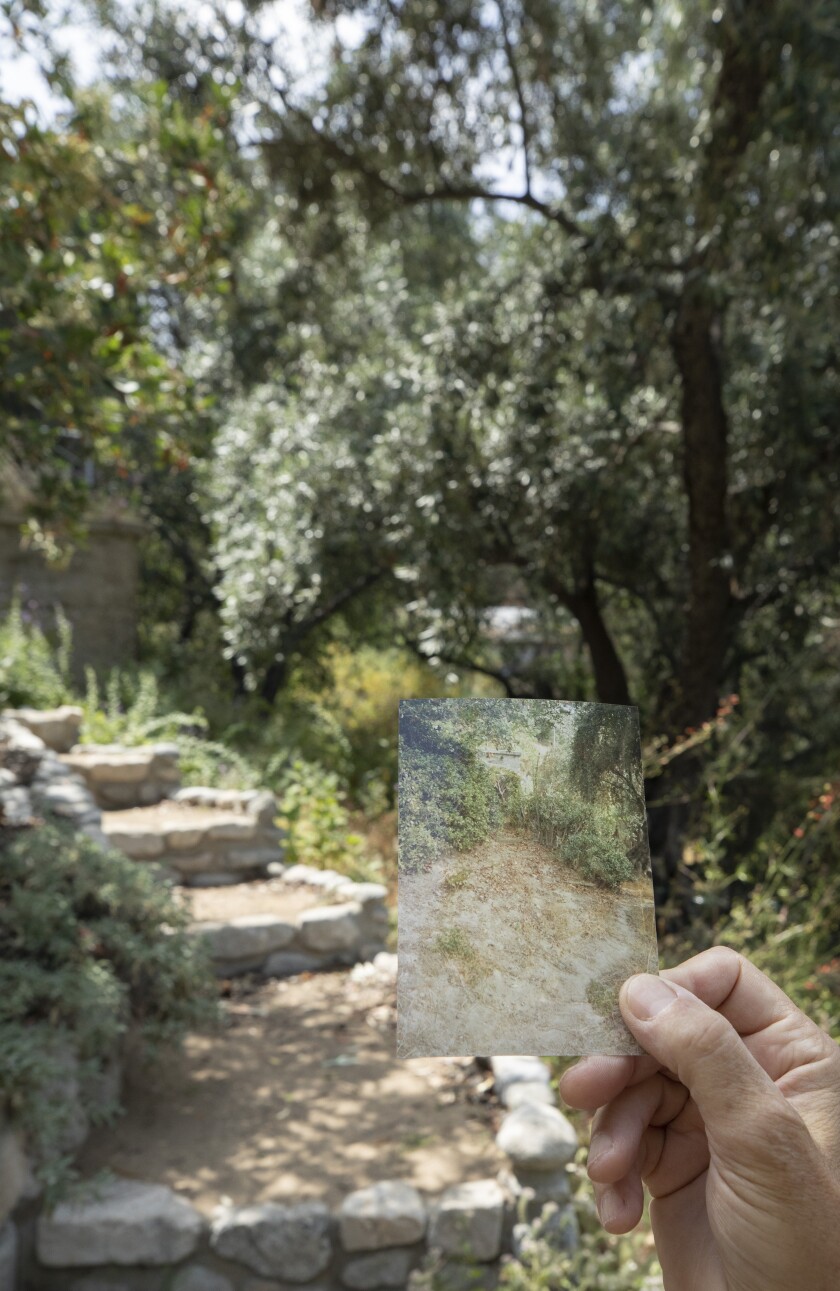
A photograph from 1992 shows the barren yard compared to now with lush native plants and stairs leading up and down the terraced yard.
(Myung J. Chun / Los Angeles Times)
Schwartz has been fighting these weeds and other non-native plants for 30 years, ever since he and his late husband, Joseph, first saw the property that would become their home. They bought a 1911 Craftsman style house that day, but for Schwartz, the biggest attraction was the huge oaks that sprawled across the bottom of their sloping lot.
Most of the grounds were covered with refuse and thickets of common SoCal landscaping plants — jades, ivy, vinca and morning glory — and he’s been reshaping the garden ever since.
Newcomers to Schwartz’s seemingly wild landscape often look puzzled as they wander his carefully constructed rock-lined paths, he said. The ground is covered with leaf litter and a tangle of seemingly unkempt shrubs; in late spring, deciduous plants are in various stages of wilting and dying as other plants are preparing to bloom.
“It looks like I hewed walkways into a native paradise,” Schwartz said, smiling. But one visitor taking the tour finally blurted that she didn’t think he had a garden at all.

Bruce Schwartz has immersed himself in a lush growth of California native plants at his Eagle Rock house.
(Myung J. Chun / Los Angeles Times)
“She said, ‘These are just plants that grow anywhere,’” Schwartz recalled. “To her, a wild plant is not a garden, and I understand not everybody is ready to give up their hydrangeas, but the ironic thing is, this is very much a garden. A garden like this takes an enormous amount of work to keep it from being overrun by weeds.”
I understand not everybody is ready to give up their hydrangeas, but the ironic thing is, this is very much a garden.
— Bruce Schwartz, LA Native Plant Source
His late father would not approve, Schwartz said. “When I think of my dad and his garden — well, I hesitate to call it a garden, it was basically an extension of his living room, a public space where he entertained people, and it had to be clean. This is not a value judgment, it’s just a completely different way of looking at a yard. His had to be perfect — no flowers could be spent, no leaves could fall on the ground and be left there. It all had to be cleaned up.”
But in a native garden, leaf litter is a valuable nutrient as it breaks down; it also shades the ground and helps the soil retain moisture, he said. And the thickets of shrubs, flowers and trees work together to provide food and shelter for insects and pollinators that help the plants spread and flourish.
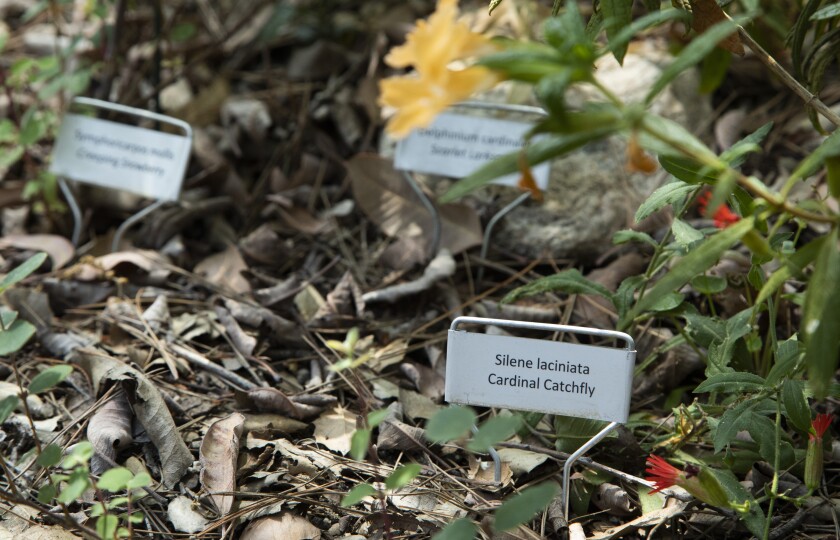
Name tags identify the native plants in Bruce Schwartz’s garden.
(Myung J. Chun / Los Angeles Times)
“I’m not saying we need to rip up every exotic landscape plant in Southern California, but having a lawn or a terrace of rose bushes, pansies and petunias… those are really thirsty plants we don’t have the water for anymore,” he said. “So as a start, I suggest maybe you reduce your lawn and have a native plant victory garden, where the food is not for you, but for the wild animals who live here.”
Schwartz recommends focusing on three kinds of plants for that victory garden — buckwheats, sages and sagebrush, all of which have many varieties to choose from and require little or no water once they’re established. “Those three plants are bulletproof, they will survive the summer semi-evergreen, and they’re incredible habitat plants,” he said. He added that if you want additional color throughout the seasons, weave in other flowering plants such as bush sunflowers, California fuchsia or easily reseeding California poppies.
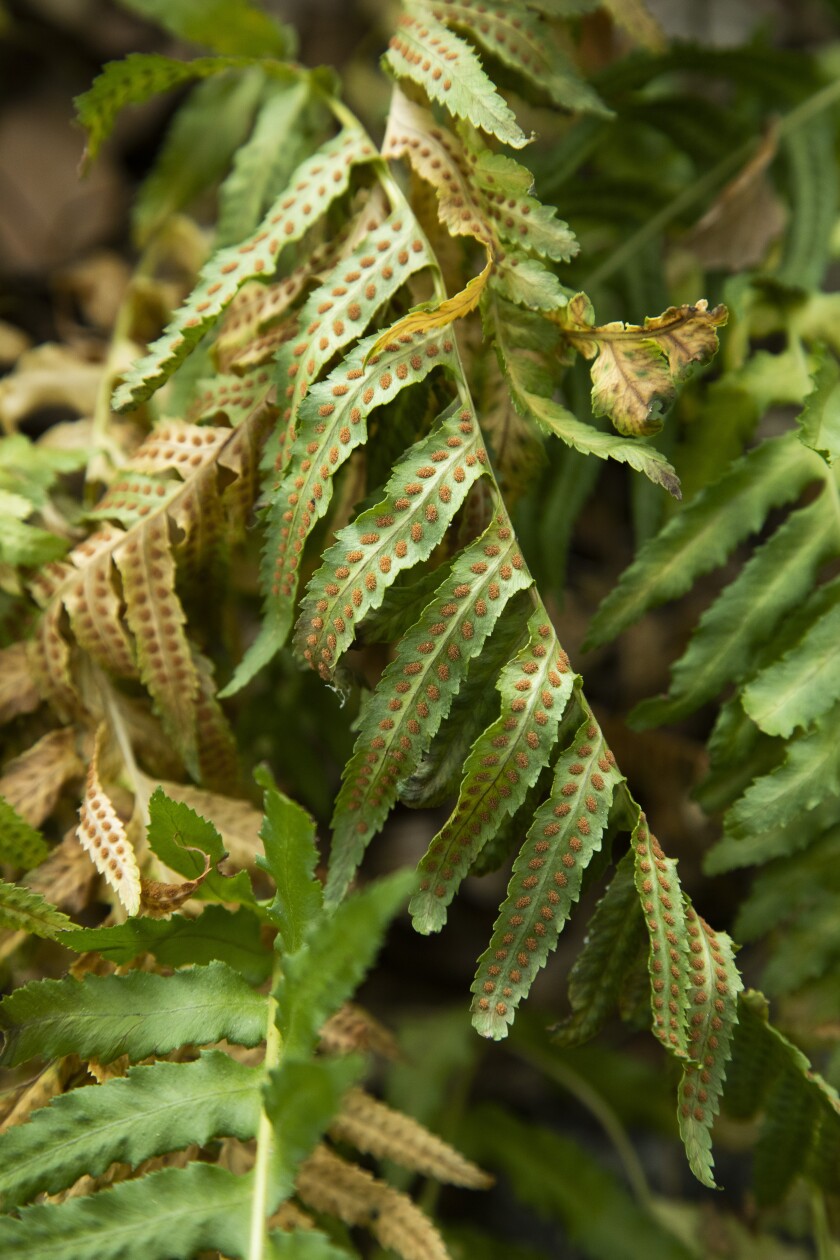
A California polypody in Bruce Schwartz’s native plants garden will go dormant for the summer, waiting for fall rain.
(Myung J. Chun / Los Angeles Times)
It’s a much better way to design a native garden, he said, “than to plant a wildflower meadow in the front yard and have what looks like an empty lot for eight months out of the year” when the flowers die back or go dormant.
When it comes to maintaining your native garden in the summer, forget your lawn mower and leaf blower and pull out a rake, hand clippers, a pair of gloves and a watering can, say Schwartz, Kanter and Evan Meyer, executive director of the Theodore Payne Foundation.
Kanter and his partners at Studio Petrichor invented the term “June Groom” to help native plant gardeners learn how to maintain their summer yards, “because by June, most of the wildflowers and annuals are pretty much spent, so it’s a great time to groom,” he said.
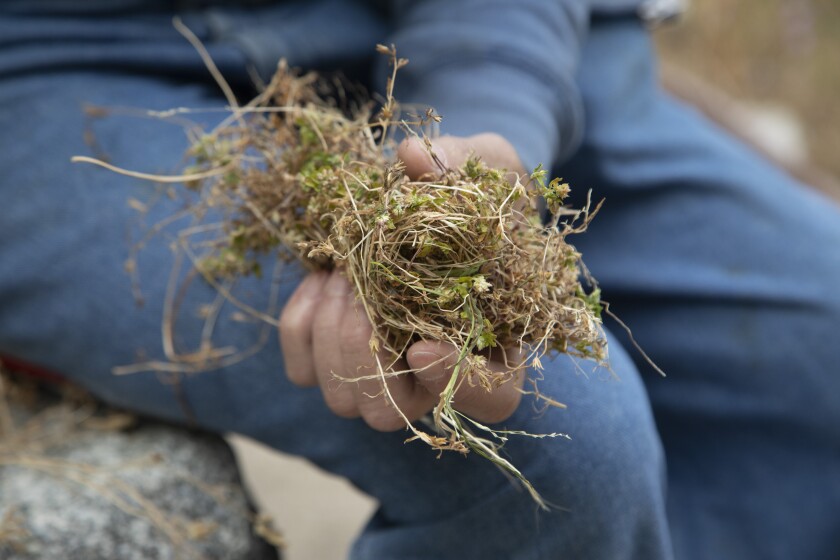
Pulling weeds is a regular task for maintaining a native garden.
(Myung J. Chun / Los Angeles Times)
Stay connected with us on social media platform for instant update click here to join our Twitter, & Facebook
We are now on Telegram. Click here to join our channel (@TechiUpdate) and stay updated with the latest Technology headlines.
For all the latest LifeStyle News Click Here
For the latest news and updates, follow us on Google News.

